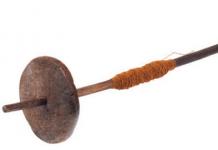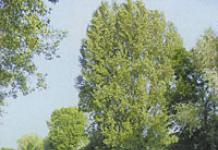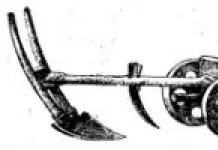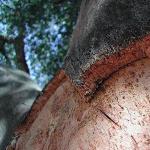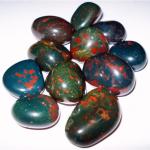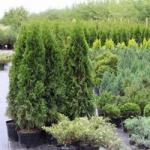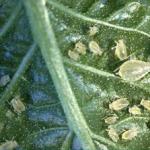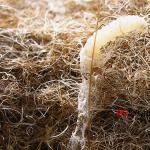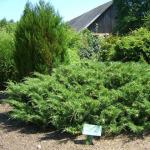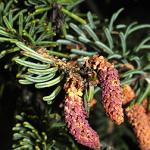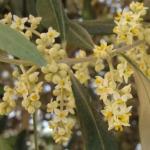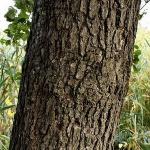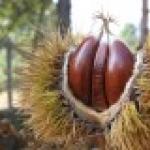Your city - Moscow?
Availability of goods, methods of delivery and payment depend on the chosen city.
Increasingly, there is a desire to return to the use of natural materials, as people are already really fed up with the use of various synthetic substances. This trend applies equally to furniture production.
Nevertheless, many people do not want to see furniture made of pine, birch or other species that grow in our area in their home: they still want exotic. One of the main suppliers of various exotic wood to the world market - Malaysia - occupies one of the first places in the world trade in roundwood and some other types of woodworking products.
Geography
Of almost 30 million m3 of roundwood exported from Asian countries, almost 25 are accounted for by this relatively small country. It is located in the southeast of Asia, on the Malay Peninsula, as well as in the north of about. Borneo (Kalimantan). The population of Malaysia is more than 25 million people: Malays (61%), Chinese and Indians. The area is more than 330 thousand km2. Of these, more than 25 million hectares, or 76% of the territory, are covered with trees. About 11 million hectares of protected forests are used for industrial harvesting.
woodworking
More than 1,000 sawmills, 177 plywood and veneer factories, more than 1,700 furniture factories operate in the country, mainly for export.
Until recently, Malaysia has been the main supplier of wood raw materials. However, over the past 10-15 years, woodworking has developed towards the production of products of a higher degree of readiness: furniture, components for its production, factories for the production of furniture boards and wooden moldings. Also, 8 factories for the production of chipboard and 11 - MDF were built.
As a result, the country annually exports wood products worth more than $5 billion. The main consumers of exported products are the USA and EU countries. Exports to Russia are also growing. Deliveries of furniture, lumber and other wood products used in carpentry and finishing work are increasing.

Illegal logging
In the 1990s, the Malaysian government was heavily criticized by international non-governmental organizations. They stated that the over-exploitation logging and logging system in some areas of Malaysia does not account for future needs and could lead to serious environmental problems. Malaysian firms have also been accused of engaging in illegal forestry activities and trade.
As a result, the demand for Malaysian timber fell sharply, and the government was forced to take drastic measures to restore order in logging.
The country introduced an alternative logging system - "Selective Management System", which became the basis of Malaysian forest management practices. It promotes greater forest diversity by varying the diameters of the species harvested and by limiting the amount of wood harvested over a given period.
Penalties for illegal logging or importing illegal timber can be severe. For example, fines can result in payments up to ten times the value of the retained wood, in addition, a fine of up to 15 thousand dollars and a prison term of up to 5 years are imposed.
Unlike any other Asian country, Malaysia has for a number of years implemented a rather sophisticated timber traceability system that has limited the ability of manufacturers to purchase and use logs from unidentified sources. On the peninsula, every felled tree on earth is tracked literally from the stump to the processing plant. A plastic tag is left on the stump, on which an identification number is applied, corresponding to the tags on all logs sawn from a particular tree. Before the logs are taken out of the forest, the official registers the tag numbers in a special journal.
And there are exotics
Sometimes you can hear the opinion that almost all Malaysian furniture is made of rubber wood. However, this is not the case: only about 2 million hectares of rubber tree (Hevea braziliensis) plantations are used in the country to supply roundwood for sawn timber and sandwich board production. This is about 10% of all logging areas. ,
The list of various tree species industrially harvested in Malaysia includes several dozen items. Many of these breeds can be found on the Russian market today.
In the middle of the last century, the Malaysian government began to organize plantations of valuable tree species: teak, mahogany (mahogany) and Meranti. However, these artificial plantations provide only a modest contribution to the supply of commercial timber.
The main breeds for furniture
The basis of Malaysian timber resources is, of course, broadleaved hardwoods. However, there are two conifers: Pod and Damar Minyak, whose resin is used as a raw material in the manufacture of transparent varnish for wood finishing.
Today, among the main types of wood for the production of furniture and other carpentry, there are such species as bintangor, dark red meranti, gerutu, kasai, meng-kulangi and others. They are used both in the form of solid wood and sliced veneer.
There is still a fairly long list of items, but they are more suitable for carpentry than for furniture production. In total, the list of wood most suitable for the production of joinery and furniture includes about a dozen items.
Description of some breeds

It is the main source of natural rubber (3-7.5 kg of rubber per year is obtained by tapping from one tree older than 10-12 years). After 40 years of operation, plantations are subject to cutting. But here it becomes an indispensable raw material for the production of furniture. Hevea has a fairly high hardness, rich wood structure. Hevea is a tropical tree that grows in a humid and hot climate, so its wood products are resistant to high humidity and temperature. Due to the presence of rubber, the hevea texture is durable and is not afraid of decay, pests. Among the advantages of hevea is a pleasant light, sometimes even a pinkish shade of wood.
After special processing and drying, hevea wood acquires a milky, light cream color (sometimes with a pink tint). Due to the presence of natural rubber in the wood structure, which holds the fibers together, the furniture has high strength. It belongs, along with teak and oak, to hardwoods. Figurines are cut out of hevea, openwork picture frames are made, and furniture from this type of wood is usually decorated with skillful carvings - elegant patterns give it a unique charm.
It is believed that relic furniture is the best and therefore the most expensive. The fact is that such trees have less noticeable annual rings that appear due to temperature changes, which is considered a sign of the nobility of wood. And in hevea, growing in a climate where there are no temperature changes, annual rings are poorly expressed initially: hevea wood is noble from birth.



Alexander Sushilin
"Furniture Factory" № 1-2/2008
Hevea Brazilian (lat. Hevea brasiliensis)- a tropical evergreen tree, through the latex vessels of which milky juice slowly flows, which is the main source of natural rubber. If the Almighty hadn’t planted Hevea brasiliensis on Earth, we wouldn’t be driving today in comfortable cars, rustling tires on asphalt or leaving behind a hurricane of dust on a country road leading to the dacha. True, today scientists have invented a method for the artificial production of rubber, but Hevea brazilian continues to be the main supplier of natural rubber.
Story
One of the names of Hevea brazilian is " Rubber Tree Pair". The word "Para" pays tribute to the Brazilian northern state, which occupies the second largest area in the country, with the name Para. It means "river" in Indian language. This is very symbolic, because the Para Rubber Tree, through whose vessels milky latex flows like a river, originally grew only in tropical forests along the banks of such rivers as the Amazon and its tributaries, including the Para River.After a thinking man came up with the vulcanization process, a "rubber fever" began among business people, enriching the especially enterprising and allowing the state of Para to revive its dormant economy. Such a privilege of the Brazilian state did not suit the crowd of businessmen from other places, and therefore Hevea seeds were smuggled out of the country and the plant spread rather quickly in the British colonies of Southeast and South Asia, as well as in the tropics of West Africa.
The word "rubber" is also borrowed from the language of the American Indians. They called the milky juice dripping from a wounded trunk "kao-chu", which meant "tears of a tree". From these "tears" the boys made a soft ball and strengthened their legs by playing with it.
Description
In the wild, the evergreen Brazilian Hevea raises its crown to the heavens to a height of up to 30 meters. The diameter of a straight trunk with a light bark can reach half a meter.Leathery trifoliate leaves are not without decorative effect, which is given to an oval leaf by clearly defined veins. The top of the leaf is pointed.
Loose brushes of inflorescences are formed by white-yellow small same-sex flowers. Male and female flowers are on the same tree, that is, Hevea brasiliensis is a monoecious plant.
Hevea seeds are reliably protected by a dense shell and a fruit - a box that hides three seeds in its three compartments.
Production life of Hevea brasiliensis
Although the role of the latex in the plant is not fully understood by botanists, in addition to playing a protective role against the enemies of the plant, it clearly has other functions. Therefore, trees that serve a person who takes milky juice for his needs grow old faster than wild ones. At the age of 25 - 30 years, they become economically unprofitable for a person, because they give less and less milky juice, and therefore go under the log house. Previously, they were simply burned as firewood, and later they began to make furniture from wood. True, the wood of Hevea brazilian is very dense, it is difficult to glue.The process of collecting latex has its own name - "tipping". A spiral incision is made in the bark of the tree, which cuts through the latex vessels of the tree. If a real professional who knows the structure of the tree is busy with the business, then such a tap will produce latex for five years.
To prevent the latex from hardening in the hot tropical sun, the collection is carried out at night, or ammonia is added to the collection cup, which allows the latex to remain in a liquid state longer. In Malaysia today, special plastic bags are used instead of cups.

 What is good furniture made of solid hevea wood made in Malaysia?
What is good furniture made of solid hevea wood made in Malaysia?
Malaysia is a rather small state that does not have the opportunity to boast of popularity throughout the world. At the same time, it is Malaysia that takes the honorable tenth place in the list of world exporters of high-quality furniture, with furniture exports at the level of 3 billion dollars a year. The reason for such a developed furniture industry is the use of the so-called "golden tree" from which Malaysian furniture is made. By "golden tree" is meant the hevea tree. At least that's what the Malaysians themselves call it. We call it the rubber tree.
A bit of history
In the old days, hevea was valued for its milky juice. It could not be eaten, but it made excellent rubber and, as a result, rubber. Currently, it is hevea wood, which has even more excellent properties, that is in greater demand. Not only furniture from Malaysia is made from this tree, but also parquet, kitchen utensils, decorative items, sports equipment. The dining group and round dining table, double beds, chairs, wardrobe, chest of drawers, cutting boards, bedrooms, armchair, parquet board, parquet, shelf, kitchen table, chest of drawers, bookcase, coffee table, desk, dishes, sofas are very popular with buyers. , Brazil is considered the birthplace of hevea. During the time of Christopher Columbus, Europeans managed to get acquainted with this amazing elastic material, which was actively used by local Indians. They played with special rubber balls, characterized by excellent jumping ability. Many argue that it was from this game that football originated. For a long time, hevea was considered a Brazilian national treasure, and the death penalty was due for the removal of the seeds of the tree. But the Europeans paid very well for rubber, and the colonization (globalization) processes did their job. One Englishman was able to smuggle out a thousand hevea seeds, which quickly spread throughout the colonies. One of the English colonies was Malaysia, where the tree was especially firmly established.
What is good about hevea?
Malaysian hevea is a tree that is just perfect for furniture production. Its wood is usually classified as hardwood, and many experts compare it with oak. Hevea products, which you can buy on sale or in the online store, are extremely durable, and making them is not as difficult as it seems. Due to its hardness, hevea allows for the finest woodcarving on its surface. Do not forget about the milky juice. Rubber is a Native American word that means "weeping tree". So, this weeping composition reliably protects the wood from the invasion of insects, as a result of which the wood does not contain any defects, which can be seen from the photo. In addition, rubber can increase the wear resistance and strength of wood material, which is also important.
Hevea furniture: main advantages
In addition to the above-mentioned wear resistance and strength, I would like to note such an advantage as resistance to high and low temperatures, as well as to high humidity. This is explained by the fact that trees grow in tropical rainforests, where conditions simply do not allow trees with other properties to survive. Knowing this, experts recommend using Malaysian furniture in modern kitchens. And the fact that hevea is used for the production of kitchen utensils speaks for itself. As for frost resistance, it is explained by the extreme dryness of the material. After drying, the wood has a moisture content of 8-10 percent, as a result of which, when freezing, the wood will not crack, even if it stands in an unheated room in the country. Natural impregnation with rubber juice allows you to protect the array from absorbing moisture and various odors. Malaysian beds are recommended for people who suffer from allergies, as evidenced by the reviews.
A question of aesthetics
Hevea solid wood furniture is simply stunningly beautiful. There are no sharp temperature fluctuations in the equatorial zone, as a result of which growing tropical trees practically do not have annual rings. The wood has a smooth structure, ideal for furniture production. The color of the wood gradually changes towards the top from the root. If from below it is light brown, then towards the top it becomes pinkish. This fact allows you to combine parts of different shades in the production. Do not forget that Malaysia for a long time was a colony of the British Empire. And the design of furniture from this country has purely English roots, characterized by practicality and convenience. At the same time, over time, artistic originality crept into the style, as a result of which the design of objects can be accompanied by the application of traditional white ornaments, the use of wicker elements and carvings, leather and metal inserts. The US and the UK are the countries that import Malaysian and Chinese furniture for the bedroom and living room in maximum volumes.
-

Modern classic furniture made of fine wood, style for the ages.
-

What you need to know before buying furniture - 10 saving points.
-

How to choose a sliding wardrobe for an apartment?
-

We choose a corner sofa - the pros and cons, design features.
-

Furniture made of precious woods - oak, beech, ash, cherry, red and black.
Natural wood furniture is always a good choice, but it is even better if it is made of high quality material that will last the owner for decades. Everyone knows about the excellent properties of oak, beech or ash wood, but for most consumers, products made from such material are simply not affordable. Looking for an alternative, buyers increasingly began to notice good and fairly budget furniture made in Malaysia, made of rubber wood. Solid hevea is a relatively new material in the woodworking industry, but it has already proved itself well in the Western European and American markets. What kind of tree is it, where is it grown and how is it prepared for the production of furniture - this, as well as other useful information in our article.
Hevea - what is this tree?
Brazilian Hevea is the most popular species among the trees of the Hevea genus. There are about ten of them in total, but it is the Brazilian one that is most common and is grown on special plantations. The countries of South America and Asia (Thailand, Vietnam and Malaysia) are engaged in its cultivation. Another name for this tree is the Malaysian oak, also known as the rubber tree. Initially, the main purpose of the cultivation of hevea is the extraction of rubber, from which latex is produced. For many years, the hevea array was not used as a raw material for the production of furniture or other interior items, it was simply burned.
Harvesting juice from this tree is a specific process. The trunk is excised in a special way and a container is substituted for the incision, into which a valuable substance flows. A healthy tree is ready to produce rubber 5-6 years after planting, but after 25 years its reserves run out and the hevea is cut down. A new planting is created in place of the cut trees. Since hevea is specially grown, the trees are not allowed to grow much, and their trunks, as a rule, do not exceed 50 cm in diameter and 30 meters in height. However, if a rubber tree grows in the wild, its trunk can be up to one meter thick.
The quality of raw materials, its features
Hevea massif belongs to valuable wood. This is one of the varieties of mahogany, which is famous for its durability and beautiful appearance. It is not for nothing that Hevea is called Malaysian oak - the fact is that its wood density is not inferior to European oak. It grows in a special tropical climate, where there is no change of seasons and strong temperature changes, and therefore there are practically no annual rings in the section of the hevea trunk. Due to the fact that a certain percentage of rubber remains in the wood, it has a dense structure. Rubber holds the fibers of the trunk together, in addition, it does not allow mold and pests to develop in them.

A distinctive feature of the hevea is that the color of the wood at its trunk changes from bottom to top. At the same time, the gradation of shades is noticeable to the naked eye - if the wood at the root has a creamy-beige color, interspersed with brown veins, then in the middle part the trunk becomes perfectly beige, and in the upper part, near the crown, it becomes pale pink. After sanding, the wood is pleasant to the touch and has a soft sheen. The texture of the wood is straight-grained, weakly expressed, it is quite dense and uniform - because of this, the wood can split if nails are hammered into it. But with proper drying of lumber, this drawback is completely eliminated. Later, any furniture can be made from it: a bed, a chair, shelves, a wardrobe, a chest of drawers, a table. Hevea is even used to produce countertops, including for bathrooms, because this material is not afraid of high humidity.
Making wood from rubber tree
With improper processing, the hevea array will be unsuitable for the manufacture of good furniture. The most important requirement for raw materials is its high-quality drying, during which almost all moisture is removed from the wood. According to the standards, its amount should not exceed 10%. Manufacturers achieve this by placing the logs in chambers where high pressure is applied to them, pushing water out of the wood. Then the blank is impregnated with an antiseptic substance, which fills the voids formed as a result of oppression in the structure of the tree. If this is not done, then the tree will quickly collapse.
Array types
Hevea is grown by a number of Asian countries, but still the main exporter supplying an array of hevea to the world is Malaysia. The tables, chairs, beds, and cabinets sold in most furniture stores are also made there. In this country, the woodworking industry was declared a priority type of management. Good working conditions have been created for the planters, but at the same time, the controlling authorities put forward rather strict requirements for them regarding the quality of the material and products that they make.
The best hevea furniture is made from solid pieces of wood. There is also glued material, it is made from bars. To prevent the products from drying out and deforming, the bars must be well dried, because due to the content of rubber in the wood fibers and their high level of moisture, they are difficult to glue. It is also worth noting that the geography of the tree is important. If it grew on rocky soil, then the wood will be harder than that of a hevea grown on black soil (on average, this figure varies between 3.5-4 HB).

Applying an array
As we already mentioned, hevea wood was originally used exclusively as a fuel material. Now its application is much wider and more diverse. The following products are produced from it:
- furniture;
- parquet;
- toys;
- decorative figurines and figurines;
- kitchen utensils;
- veneer for covering cabinet furniture;
- facing panels.
The peculiar texture of wood allows you to make the finest carving on it. Thanks to this, craftsmen carve very beautiful furniture from hevea wood. Chairs and tables are covered with patterns, although, as a rule, manufacturers prefer not to hide the rich texture of wood behind excessive decor, simply by varnishing the products.

Hevea furniture: types and benefits
This material is characterized by absolute versatility. Almost any bed is made from it. A bed made of solid hevea looks especially interesting - it can be made in a modern or classic style. The stores present single sets, in which both cabinet and upholstered furniture are assembled from this wood.
The most popular among buyers are sets of dining and kitchen furniture. Such tables and chairs look great visually, in addition, they are soundly made and are stable and durable. Due to its resistance to moisture, hevea products can be used not only in a dry room (bedroom, nursery or living room), but also in the kitchen and even in the bathroom.

How to care for hevea furniture?
Special care for an array of rubber trees is not required. It is enough to keep the furniture assembled from this material clean, and also try not to succumb to sudden temperature changes. Even experts in the sale of furniture recommend moistening the room in which hevea products are installed. If the air in them is too dry, then the wood can dry out and deform. You can avoid this with the help of a household air humidifier, and if there is no such device at hand, it will be enough to place a vessel with water (a glass or a small jar) near the furniture. If the product has sliding elements (boxes, supports, etc.), then they can be periodically lubricated with paraffin for skis.

Hevea brazilian is a tree from the Euphorbiaceae family, often branched from the very bottom. It reaches a height of 30 - 45 meters and a trunk thickness of 50 or more centimeters. It grows wild in Venezuela and the Brazilian province of Parana. It gives the best grade of rubber, which is why it is grown on plantations in South America and the tropical zone of South and Southeast Asia (Sri Lanka, Thailand, Indonesia, Malaysia).
Hevea is home to South America (Brazil), after some time it spread to other continents and countries. Now hevea grows in Southeast Asia (Indonesia, Malaysia, Thailand, Sri Lanka, India, Vietnam, Myanmar, Cambodia), South America (Bolivia, Brazil, Peru, Colombia) and tropical Africa (Nigeria, Congo, Liberia). In the wild, Hevea brazilian is found in the tropical jungle, it is actively grown on artificial plantations, and it can also be seen in the plant collections of botanical gardens.
The main purpose of Hevea is the extraction of natural rubber obtained from milky juice by tapping. It is now widely cultivated in tropical countries. The main share of rubber comes from relatively large plantations, on the territory of which there are factories for the processing of collected latex and the production of sheet rubber.
Wood.
The texture of rubber wood has a pleasant light pink color, with an unusual, barely noticeable natural pattern, which indicates the nobility of wood. Such qualities are possessed only by relict tree species growing in a rather narrow equatorial belt, where moisture conditions practically do not change throughout the year, due to which there is no ring structure of wood. Hevea is easily processed and polished almost to a mirror finish, which allows you to create truly exquisite products.
Over time, hevea wood darkens. Hevea wood is thin-layered, durable, wear-resistant, almost not affected by water, resists rot and insects very well. It is well processed and polished almost to a mirror finish. Compared to other tree species of the same density, the shrinkage of the rubber tree is relatively small. Hevea wood contains a thickened milky sap containing natural rubber, which makes it somewhat difficult to process and, in particular, varnish. Before coating with polyurethane varnishes, it is necessary to apply primers that exclude the "ignition" of wood. To prevent the formation of cracks, a prerequisite is the drilling of holes for nails and screws.
